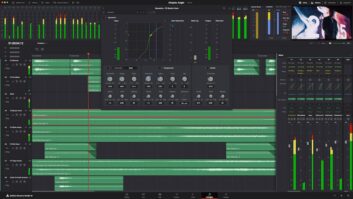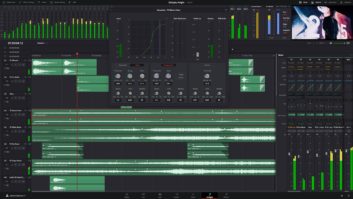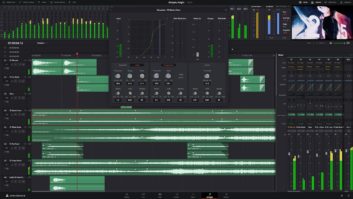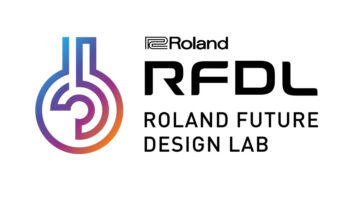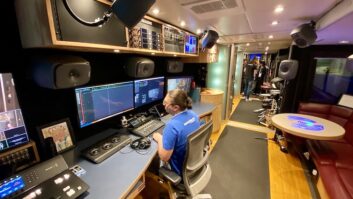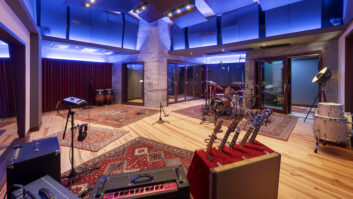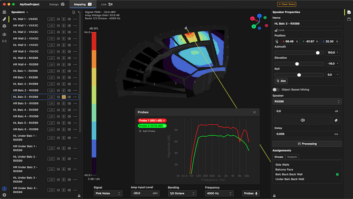Fremont, CA – February 10, 2021 – Blackmagic Design announced today that the science fiction short film “Alone,” which premiered on WatchDust.com December 3rd, was shot using Blackmagic Design cameras, and posted with DaVinci Resolve Studio.
Kaya Torres, an engineer with a sailor’s mouth and a stubborn spirit, barely escapes her research ship when calamity breaks it in half. Now she’s circling a black hole in a pod, with no one coming and no one to help. While figuring out what to do, Kaya starts sending messages to Hammer, a cartographer marooned on a nearby planet. And as their friendship grows, Kaya’s options slowly dwindle, until survival seems hopelessly out of reach.
Written by J. Scott Worthington and directed by William Hellmuth, “Alone” was a case study in filmmakers following their passion to make a feature quality short film on a limited budget. Hellmuth, an accomplished cinematographer looking to grow his resume into directing, connected with Worthington after reading his short story of the same name. Hellmuth was hooked.
As a cinematographer, Hellmuth knew that creating a compelling image was important for a short film. “I love cinematography,” said Hellmuth. “I love being a DP. There is so much meaning and depth you can weave into a story through visuals.” So, in deciding on what package to shoot with, it was an easy decision. “I always knew I could get great results from the URSA Mini Pro G2. It was also the camera I’ve used so often in my commercial work, and much of my narrative work. I love how skin tone and colors are reproduced with this camera. Most of my strongest work has been shot on Blackmagic cameras.”
Hellmuth decided to shoot the film with both anamorphic and spherical lenses, with the intent to create a stronger sense of isolation while inside the ship for the main character with anamorphic, while on the planet using a more standard 16:9 aspect to capture the stunning landscapes. He appreciated the ability to switch between aspect ratios quickly on the URSA Mini Pro 4.6K G2, making transition between sets and scenes quick and painless.
Shooting in Blackmagic RAW also gave the filmmakers the highest amount of quality in post. “Blackmagic RAW was actually a big factor in choosing to shoot with Blackmagic cameras in the first place,” added Hellmuth. “It’s the best codec in the world. I knew shooting the film in Blackmagic RAW would ensure maximum flexibility in post, work great for visual effects, and be amazing for color. It’s hard to define, but there is a quality to all of the footage I’ve shot in Blackmagic RAW that I love. The colors are always rich, and the detail is sharp without being clinical, and this quality feels like it’s there even when I push the footage quite far in post.”
To take advantage of the entire Blackmagic Design ecosystem, Hellmuth chose to post the film entirely in DaVinci Resolve Studio, starting with picture editing. Editor Anthony Parisi was new to Resolve but was able to quickly pick up the new platform. “I’ve been cutting in other programs for many years now and I was slightly nervous about testing Resolve on a larger, narrative film because of the need for speedy work on our post production schedule,” said Parisi. “I was impressed with how intuitive the editing tools for Resolve were and I was able to jump in much faster than I expected. One thing that helped was being able to quickly recreate my old keyboard shortcuts. That gave me a jump start and eased me in right away.”
Resolve’s extensive editorial tools and workflow proved valuable to Parisi as well. “I loved skipping over the need for proxy files and getting to use the raw footage. Then, after the cut was finished, it was nice not having to wrestle with any EDLs and instead just hand the timeline over to the colorist.” Scenes with speed adjustments on clips typically require an editor to review after conform, but since the film was edited in Resolve, Parisi knew the edits would be right. “It was great to have confidence that the speed changes would all be preserved without having to go in and fix any timing issues that often occur in the back and forth through multiple programs”
“In trimming clips on the timeline, I also love how you can visually see how much footage remains in a selected clip. You can see it right there in the timeline, so you know right away whether there’s anything more to investigate. That’s a nifty little feature that I miss now when I’m working in other programs. It is so helpful.”
As a science fiction film set primarily in space, “Alone” relied heavily on every aspect of post production to complete the compelling look and feel, and the range of tools available in Resolve proved invaluable. The team, including colorist Dan Edwards and sound mixer Stephen Hartwell, were able to share project files easily, and with each change or addition, this helped Hellmuth and Parisi improve the edit.
“The Blackmagic RAW files were a huge help in so many ways,” said Edwards. “They’re so efficient in playback, working from separate offices on home machines really didn’t hold us back.”
With post production starting just as the COVID-19 lockdown started, the team relied heavily on DaVinci Resolve’s collaborative tools. “This project happened right as the pandemic was disrupting how we were handling every aspect of our post workflow, but out of the box Resolve had a fantastic solution with its Remote Grading feature. William was able to jump on a Flanders monitor in his home office while I remote controlled his copy of Resolve, which gave us huge peace of mind that we were looking at similar images.”
Just as with editorial, Edwards was pleased with how easy it was to work with other departments. “I mean this in the best way possible, but I hardly had to think about the editor or mixer! The turnover couldn’t have been simpler, which was a great help with managing assets coming from people spread out across the country. It’s also a huge peace of mind to just be able to hand over a project file and not worry about conforming render files.”
At FreshMade in Seattle, Hartwell utilized DaVinci Resolve’s Fairlight to create the big sound of “Alone.” Though the story is set largely in one location, inside an escape pod, the sound design and mix still had plenty of challenges and moments to build on. “The idea I had for the wormhole sequence was that everything Kaya and Hammer had said was trapped in the wormhole, because of the whole space time distortion thing,” said Hartwell. “So, fragments of their past conversations are coming at Kaya and at varying speeds as she travels through the wormhole. It was exciting to get a chance to further explore the energy that comes from sound in motion.”
Sound designer Christopher Moore provided his session, which Hartwell broke up into 15 discrete tracks, as timelines in Resolve. “That way we could have the flexibility to simultaneously mix more micro and macro.” The sound team then used the collaboration features to allow someone to mix on the master timeline while another person could be editing dialogue in another room. The team used the powerful tools built into Resolve’s Fairlight, but its ability to connect to third party plugins was also a useful feature.
“For Key Compression around the dialog, we use BlueCat, which allows us to feed into the SideChain version of the Waves C6 Multiband Compressor and really get specific with the frequencies we want the dialogue to be ducking. We also use iZotope Rx for any audio cleaning and Reaper for certain sound designing tasks. One place in the film this method proved useful was the wormhole sequence, where we created some interesting pans and doppler effects. The way it was all set up in Resolve and Fairlight, we could use external processes and any changes we made would instantly update in the Resolve session.
While still a cinematographer, Hellmuth is looking forward to directing the feature version of the short, hoping to assemble the same team to create more magic. “I love collaborating with actors, designing a scene, and the opportunity to dive into every creative aspect of a film with the various department heads. And in the end, it was J’s beautiful story that truly re-sparked the desire inside of me to direct. And that’s really what it boils down to; I want to direct stories that matter to me, move me, and transport me.”
Press Photography
Product photos of DaVinci Resolve Studio, URSA Mini Pro 4.6K G2 as well as all other Blackmagic Design products, are available at www.blackmagicdesign.com/media/images.
About Blackmagic Design
Blackmagic Design creates the world’s highest quality video editing products, digital film cameras, color correctors, video converters, video monitoring, routers, live production switchers, disk recorders, waveform monitors and real time film scanners for the feature film, post production and television broadcast industries. Blackmagic Design’s DeckLink capture cards launched a revolution in quality and affordability in post production, while the company’s Emmy™ award winning DaVinci color correction products have dominated the television and film industry since 1984. Blackmagic Design continues ground breaking innovations including 6G-SDI and 12G-SDI products and stereoscopic 3D and Ultra HD workflows. Founded by world leading post production editors and engineers, Blackmagic Design has offices in the USA, UK, Japan, Singapore and Australia. For more information, please go to www.blackmagicdesign.com.
